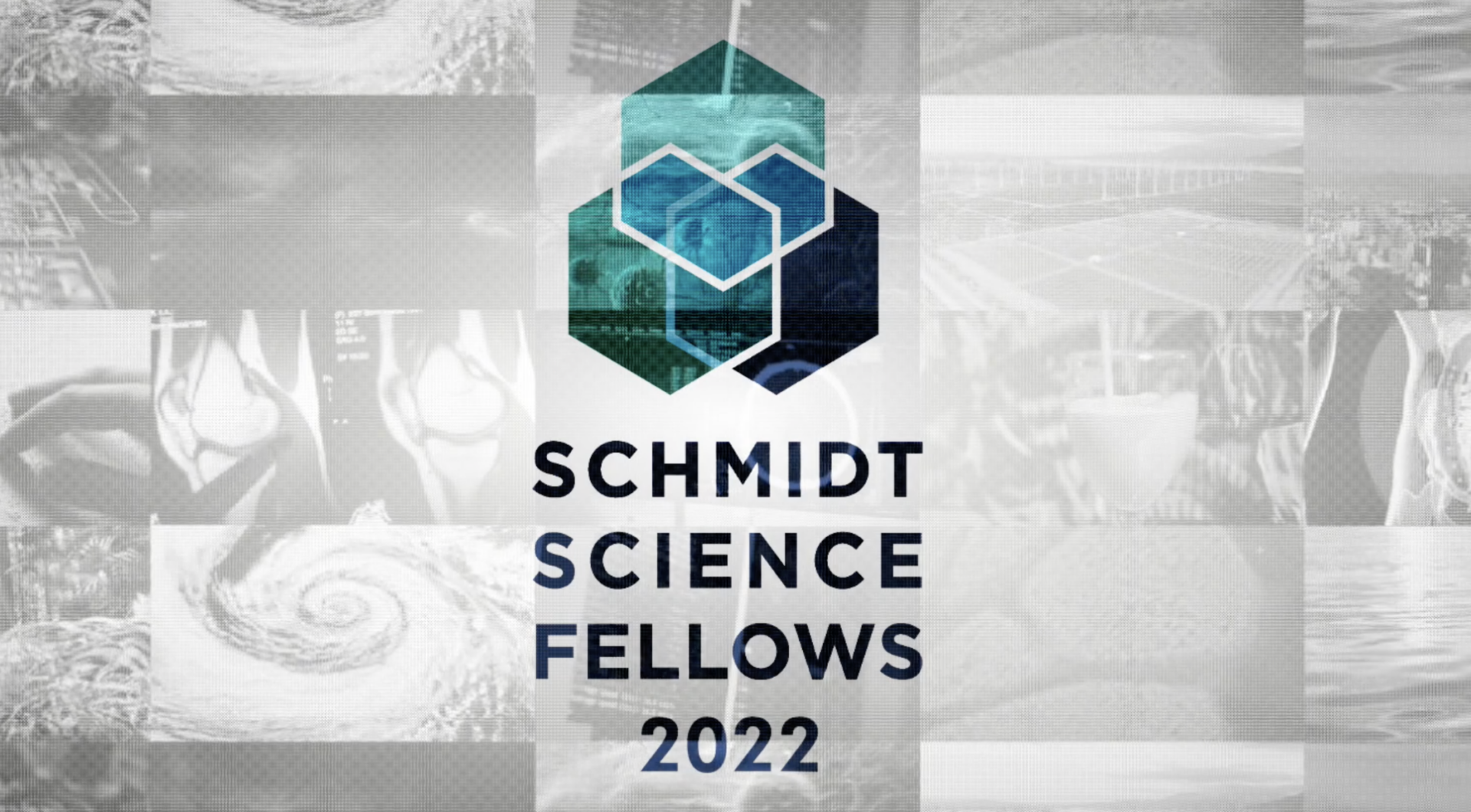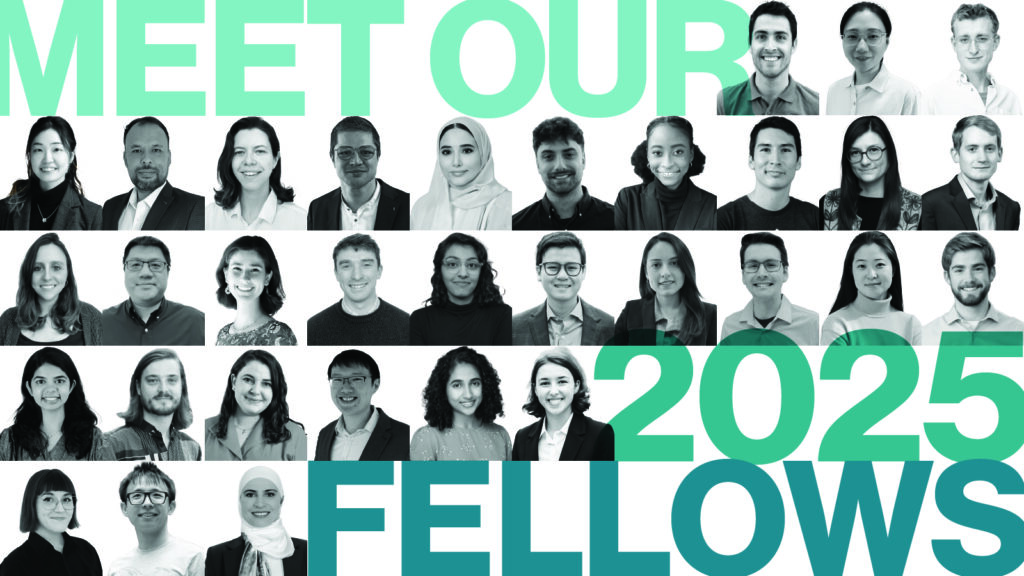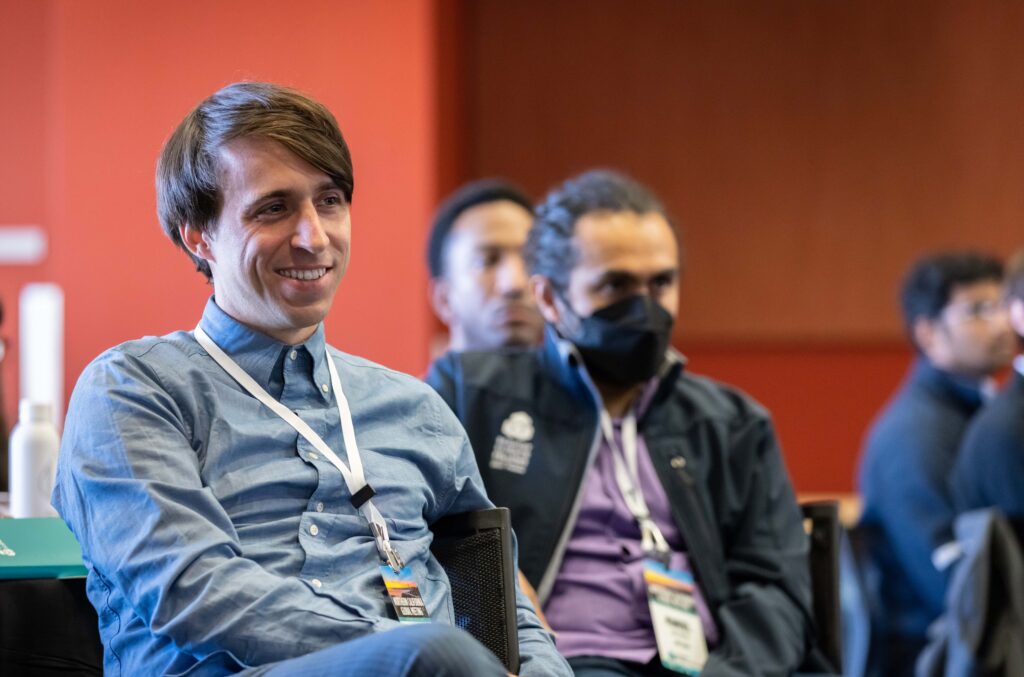Juncal Arbelaiz, Massachusetts Institute of Technology
Juncal has been investigating the underpinning theoretical and computational techniques required for the successful development of soft robots. Soft robots have huge potential as they can adapt their form to their environments, making them ideal for exploratory, search and rescue, or surgical applications. As a Schmidt Science Fellow, Juncal will pivot to systems biology to explore how the nervous system encodes and processes sensory information with the aim to utilize this for future safety-critical artificial intelligence applications.
Emmanuela Bonglack, Duke University
Emmanuela’s PhD research advanced our understanding of cancers driven by Epstein-Barr Virus, where she identified new therapeutic targets. She will now pivot from genetic approaches to tumorigenesis to data science approaches, integrating machine learning and genomics approaches to mitigate chronic disease risk in iron-deficient populations – training predictive models for personalized medicine in low-resource settings.
Maria Lastra Cagigas, University of New South Wales (UNSW)
Maria’s PhD research focused on identifying molecular targets to develop novel experimental drugs for cancer treatment. As a Schmidt Science Fellow, she will pivot into microbiology, where she plans to explore how the gut microbiome and human cells interact in-situ to revolutionize cancer treatment. Maria hopes this connection will help us design tailored microbial treatments to improve cancer outcomes in the future.
Xiangkun Cao, Cornell University
Xiangkun’s PhD research focused on microscopic precision in the simultaneous delivery of light and fluids by optofluidics, with advances relevant for sustainability and health applications. As a Fellow, he will pivot into chemical engineering to work on ways to upscale carbon capture to mitigate climate change and unlock economic opportunities. Xiangkun plans to develop and apply new skills in electrochemistry, machine learning, and techno-economic analysis.
Paul Chen, University of Toronto
Paul’s PhD work focused on ways to control the structure of nanocrystals, which have important applications in myriad sectors from medicine to clean energy. As a Schmidt Science Fellow, Paul will pivot from chemical engineering to nanoparticle systems. He plans to develop new methods to identify organic nanoparticles with therapeutic potential. Paul hopes this work will lead to establishing a scalable platform to develop safe, effective therapies for many genetic disorders.
Mostapha Dakhchoune, École Polytechnique Fédérale de Lausanne (EPFL)
During his PhD, Mostapha’s research tackled the amount of energy and resources wasted in separating chemicals in industrial processes by developing next generation membranes to replace current energy-hungry techniques. As a Schmidt Science Fellow, he plans to pivot from engineering to chemistry to understand molecular motion at an angstrom scale to be able to benefit people’s lives at the everyday scale by lowering commodities cost production.
Tiarnan Doherty, University of Cambridge
Tiarnan’s PhD involved understanding the fundamental properties of metal halide perovskites, a revolutionary new technology for inexpensive, scalable, and highly efficient solar panels. As a Fellow, he will pivot from materials science to computer science with an ambition to develop new AI approaches that will greatly accelerate the discovery and development of materials for applications in energy, healthcare, and computing.
Kara Fong, University of California, Berkeley
Kara has been working on understanding electrolyte transport phenomena across a broad range of length and time scales and applying this approach to Lithium-ion batteries. She will now pivot from chemical engineering to quantum mechanics and plans to integrate theory and simulation at multiple scales to design technologies for clean energy and water.
Berit Goodge, Cornell University
Berit spent her PhD developing instrumentation to characterize atomic scale phenomena in crystalline quantum materials. As a Fellow, Berit plans to move from materials characterization to materials growth and synthesis, formulating novel materials that will underpin the quantum revolution in computing, data and energy storage.
Samuel Greene, Columbia University
Sam has been simulating quantum mechanical behavior of electrons to determine the properties of novel materials. He now plans to combine computational and experimental approaches to design new catalysts for the electrolysis of seawater. Sam hopes this approach could lead to sustainable and large-scale hydrogen production in coastal regions, offering significant opportunities for new renewable energy sources.
Harsha Gurnani, University College London
During her PhD, Harsha used new microscopy techniques and combined experimental and computational approaches to investigate the structure of Golgi cell population activity to advance our understanding of how the cerebellum cortex of the brain functions. As a Schmidt Science Fellow, she will pivot from neuroscience to biomedical engineering and plans to expand the quality of rehabilitative brain-computer interfaces to improve independence for many patients suffering from reduced mobility due to injury or disease.
Alexander Heyde, Harvard University
Alexander plans to pivot from evolutionary biology to mathematical modeling as a Schmidt Science Fellow. Alexander’s PhD research focused on understanding the mechanisms by which evolution shapes biological processes, from tumor progression and blood genetics to animal morphology. Now, he plans to develop quantitative models of the progression of cancer and heart disease in the body, enabling better therapeutic approaches to improve our lifespan.
Michael Heyns, University of Cape Town
Michael’s PhD involved research focused on improving the operational modeling of geomagnetic fields and geomagnetically induced currents for utilities. Michael plans to harness computational physics to help us better understand the fundamental phenomena underlying space weather events, such as solar storms. He aims to increase the resilience of modern infrastructure in the face of extreme space weather events.
Natsumi Komatsu, Rice University
Natsumi has been investigating carbon nanotubes, a nanomaterial with significant potential to revolutionize a number of applications and industries. She will now pivot from materials science to neuroscience. Natsumi aims to implement quantum technologies in brain imaging to significantly improve our ability to monitor neurotransmitters and underpin our understanding of neurodegenerative diseases such as Alzheimer’s.
Caitlin Maikawa, Stanford University
Caitlin addressed challenges in diabetes management during her PhD, focusing on the development of next-generation insulin drugs to enable improved access to medication in resource-poor environments and the development of a novel device to enable fully autonomous insulin delivery. As a Schmidt Science Fellow, Caitlin will pivot from biomedical engineering to materials science and fabrication. She plans to develop technologies that will allow for improved monitoring of chronic inflammation.
Naomi Arita Merino, Wageningen University & Research
During her PhD, Naomi studied the lipid crystal structures formed by milk fat and which affect the nutritional value and environmental impact of food products. As a Fellow she now pivots from food science to biotechnology and plans to boost the widespread use of microalgae as a nutritious and sustainable food ingredient, improving our health, food security, and reducing environmental impact.
Elise Needham, University of Sydney
Elise has applied new mass spectrometry technologies and developed innovative experimental and computational methods to expand our understanding of how the critical cellular process of phosphorylation regulates health outcomes, particularly relating to the biological signal associated with defective glucose uptake in diabetes. She now aims to pivot into computational genomics and machine learning to decode the molecular drivers of heart disease across diverse global populations to improve treatments and diagnosis.
Kevin Ng, The Francis Crick Institute
Kevin’s PhD research focused on retroelements, the mobile repetitive elements that make up nearly 50% of our genomes. Retroelements have important roles in many biological functions but are challenging to identify. Kevin developed new techniques to identify novel retroelements with critical functions in immune regulation. Kevin will now pivot from genetics and genomics to viral immunology. Kevin plans to integrate ecology, immunology, and virology to design effective, economical vaccines that can be rapidly adapted to combat future pandemics.
Ethan Perets, Yale University
Ethan’s PhD research contributed to the fundamental understanding of the role of supramolecular water assemblies in biomolecular structure and suggests new answers to why water is necessary for life. As a Schmidt Science Fellow, he will pivot from biophysics to neuroscience and plans to build experimental models to treat neurodegenerative diseases by creating high-precision imaging technologies. Ethan hopes to unveil how the living brain processes chemical and electrical information.
Elizabeth Phillips, University of Toronto
During her PhD, Elizabeth’s research focused on CFC contamination and degradation in the environment, extending the discipline of compound-specific isotope analysis in new directions to identify new enzymes with applications in cleaning up contaminated environments. As a Schmidt Science Fellow, she plans to pivot from environmental science to structural biology, focusing on unlocking hydrogenase catalysis to scale up biotechnology for large-scale sustainable hydrogen production.
Jason Qian, Harvard University
Jason has developed a microbial system that can be used to safely and reliably label items as they progress through different locations. This technology can have important applications for food safety, health, commerce, and security. Now, as a Schmidt Science Fellow, Jason aims to pivot into machine learning to explore the enormous diversity of organisms that exists in nature. By combining computational and experimental approaches, Jason plans to accelerate the discovery of new biological systems and harness them to build broadly applicable tools.
Hannah Rana, University of Oxford
Hannah’s PhD research in astronautical engineering focused on developing cryocoolers for space science instrumentation and detectors for the next generation of space missions. As a Schmidt Science Fellow, Hannah will pivot from thermodynamics and space instrumentation to biomedical engineering to advance the development of artificial retina with the aim of restoring vision to the blind.
Tim Sainburg, University of California, San Diego
Tim has been studying the underlying and complex structure of birdsong using machine learning techniques to understand more about human language and how we communicate with each other. As a Fellow, Tim now plans to pivot into systems biology to explore more broad biological building blocks of behavior. His work will further our understanding of human behavior and inform better AI algorithms.
Sandya Subramanian, Massachusetts Institute of Technology
Sandya has been investigating the processing of unconscious pain in patients while under general anesthesia by tracking autonomic nervous system responses using statistical modeling and machine learning. As a Fellow, she will pivot from mathematical modeling to biomedical engineering and plans to invent new technology for at-home monitoring of gut-nervous systems interaction. Sandya hopes accurate monitoring of patients at home over time will provide clinicians with insight about underlying patient-specific causes of disease and help personalize treatment plans.
Anthony Waddle, University of Melbourne
Anthony’s research has been focused on preventing the catastrophic loss of amphibian biodiversity, due to the chytrid fungus pandemic, through veterinary and ecosystem management approaches. As a Schmidt Science Fellow, he now plans to develop ways to engender resistance to this disease in frog species using synthetic biological techniques to restore endangered populations in nature.
Mingyi Wang, Carnegie Mellon University
Mingyi has been investigating the poorly understood but critical process of new particle formation in the atmosphere. He now plans to pivot into microphysics and wants to develop a novel technique for aircraft measurements of particle size distribution in the free troposphere and combine this with machine learning data fusion approaches and new microphysics models. Mingyi wants to apply this knowledge to drastically improve climate models where the role of aerosol particles can be unclear.
Christine Wilkinson, University of California, Berkeley
Christine plans to pivot from ecology to computer science as a Schmidt Science Fellow. Christine’s PhD research explored methods of incorporating multidisciplinary mapping with carnivore ecology and behavior, land use, and human activity to inform conservation strategies. As a Fellow, she now plans to use machine learning methods to understand shared socioecological drivers of human health, wildlife health, and connectivity in urban spaces.
Kevin Zhou, Duke University
Kevin plans to use his Fellowship to enhance the speed and accuracy of medical diagnostics by enhancing the contrast and penetration depth of optical imaging. During his PhD, Kevin developed new computational imaging methods and theories for a wide variety of applications and techniques, exploiting wavelength and angular diversity in optical imaging techniques to enhance their resolution and 3D resolving capabilities computationally.
Hannah Zlotnick, University of Pennsylvania
Hannah’s PhD research focused on harnessing remote forces such as magnetism or gravity to assist engineered cartilage repair. She investigated ways to engineer cells or to drive targeted drug delivery at the bone-cartilage interface. Hannah now plans to pivot into biomedical engineering to utilize the potential of biofabrication to create structures to model inflammatory diseases of the knee joint to assess potential therapeutics for osteo arthritis.



